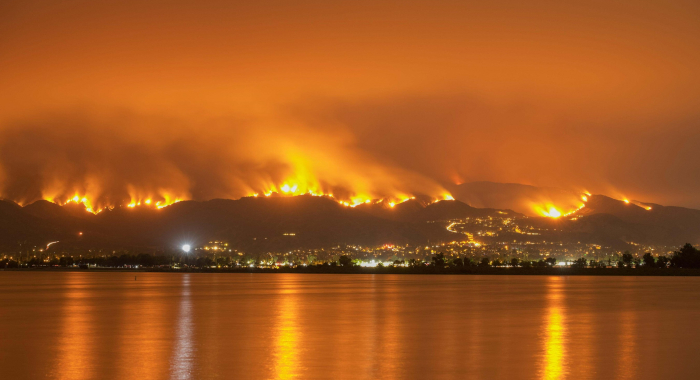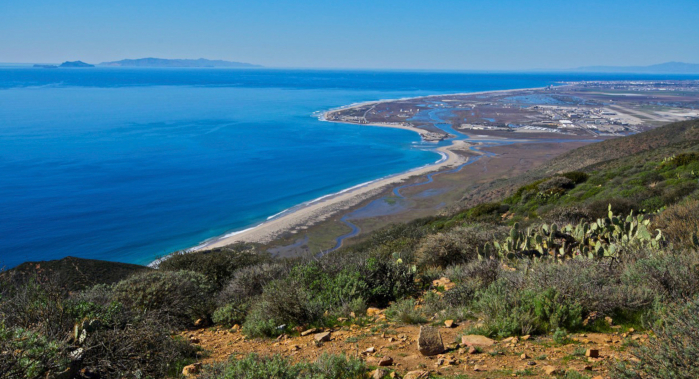Systematic, science-based conservation planning is a hallmark of the Conservancy. For biodiversity to thrive, habitats need to be protected, enhanced, or restored not just in the still wild places on the planet but also where people live and make their livelihoods.
Multi-disciplinary planning can help elucidate where the highest priority places are and what needs to happen there – and inform tradeoffs between conservation and other societal values.


Barton H. Thompson, Jr., Melissa M. Rohde, Jeanette K. Howard, Sandi Matsumoto
In 2014, California’s landmark Sustainable Groundwater Management Act (SGMA) promised comprehensive management of California’s groundwater. This report, Mind the Gaps: The Case for Truly…Mary G. Gleason, Jennifer E. Caselle, Walter N. Heady, Vienna R. Saccomanno, Julie Zimmerman, Tristin Anoush McHugh, Norah Eddy
Global kelp forests are biodiverse and productive nearshore ecosystems that provide a wide range of ecosystem services, but they are at risk from both local stressors and global drivers of kelp loss.…Alyssa E. Semerdjian, H. Scott Butterfield, Robert Stafford, Michael F. Westphal, William T. Bean
This paper in the Journal of Wildlife Management combines nearly 20 years of remote sensing, field/trapping, and modeling data to develop a new approach to the identification and prioritization of…Jono R Wilson, Darcy Bradley, Kristina Phipps, Mary G Gleason
Overfishing threatens the health and resilience of the ocean. In response, the global conservation community has set ambitious targets for protecting biodiversity inside no-take marine reserves. Yet…Serena Lomonico, Mary G Gleason, Jono R Wilson, Darcy Bradley, Kate Kauer, Richard J Bell, Thomas Dempsey
Climate change poses unprecedented challenges to the sustainable management of wild capture fisheries. Management systems that improve the flow of information so that actionable steps can be taken are…Kirk Klausmeyer, Jeanette Howard, Melissa Rohde, Charlotte Stanley
The first step to sustainably manage groundwater dependent ecosystems (GDEs) is to identify where they are. The Nature Conservancy developed a statewide spatial database that provides locations of…Laurel Saito, Bill Christian, Jennifer Diffley, Holly Richter, Melissa M. Rohde, Scott A. Morrison
In this paper, we describe minimum provisions for planning, managing, and monitoring groundwater in a manner that collectively can lower the risk of harm to groundwater-dependent ecosystems and…H. Scott Butterfield, T. Rodd Kelsey, and Abigail K. Hart, Editors
As the world population grows, so does the demand for food, putting unprecedented pressure on agricultural lands. At the same time, climate change, soil degradation, and water scarcity mean that…Erin Conlisk, Gregory H. Golet, Mark D. Reynolds, Blake Barbaree, Kristin Sesser, Kristen Byrd, Sam Veloz, Matthew E. Reiter
Highly mobile species, such as migratory birds, respond to seasonal and yearly changes in resource availability by moving among habitats. Understanding how they select among habitats is important for…Jennifer Sletten, Mimi D’Iorio, Mary G. Gleason, Alex Driedger, Timoth´e Vincent, Claire Colegrove, Dawn Wright, Virgil Zetterlind
Understanding the complex seascape of regulations that apply across U.S. ocean waters is critical for effective marine resource management. This study found that cumulative restrictions from…Sydney J. Chamberlin, Michelle Passero, Ashley Conrad-Saydah, Tanushree Biswas, Charlotte K. Stanley
California’s natural and working lands – its forests, grasslands, wetlands, farmlands, rangeland, and urban green spaces – provide Californians with numerous environmental, social,…Mary Kang, Debra Perrone, Ziming Wang, Scott Jasechko, Melissa M. Rohde
To ensure that California’s groundwater is sustainably managed in the future and over the long-term, current state definitions of what constitutes groundwater may need to be revised, according…Benjamin P. Bryant, T R. Kelsey, Adrian L. Vogl, Stacey A. Wolny, Duncan J. MacEwan, Paul C. Selmants, Tanushree Biswas, H S. Butterfield
Irrigated agriculture has grown rapidly over the last 50 years, helping food production keep pace with population growth, but also leading to significant habitat and biodiversity loss globally. Now,…Dr. Winston Vickers, Karen C. Drayer, Trish Smith, Brian Cohen
Highways across the greater San Diego region in southern California are major barriers and causes of mortality for mountain lions and are contributing to the species’ genetic restriction and…Rodd Kelsey, Scott Butterfield, Abigail Hart, Ruthie Redmond, Hope Bigda-Peyton
This Policy Brief summarizes the results of a study on the potential for strategic habitat restoration in the San Joaquin Valley of California as an important part of reducing overall water…Butterfield, H.S., M. Katkowski, J. Cota, O. Sage, C. Sage, K. Easterday, D. Zeleke, L. Riege, S. Gennet, K. Lin, B. Leahy, M. Bell, M. Reynolds
Cattle grazing is the dominant land management tool TNC has to manage biodiversity and reduce the threat of catastrophic wildfire at the TNC's Jack and Laura Dangermond Preserve. This…Butterfield, H.S., M. Reynolds , M.G. Gleason, M. Merrifield, B.S. Cohen, W.N. Heady, D. Cameron, T. Rick, E. Inlander, M. Katkowski, L. Riege, J. Knapp, S. Gennet, G. Gorga, K. Lin, K. Easterday, B. Leahy, M. Bell
This Plan frames the biological and cultural significance and provides the short- and long-term goals, objectives, and priority actions for the Jack and Laura Dangermond Preserve.Stephanie Dashiell, Mark Buckley, Dustin Mulvaney
In an effort to address climate change, California enacted a clean energy energy standard that is driving a market for significant amounts of renewable energy. To explore the economic benefits of…